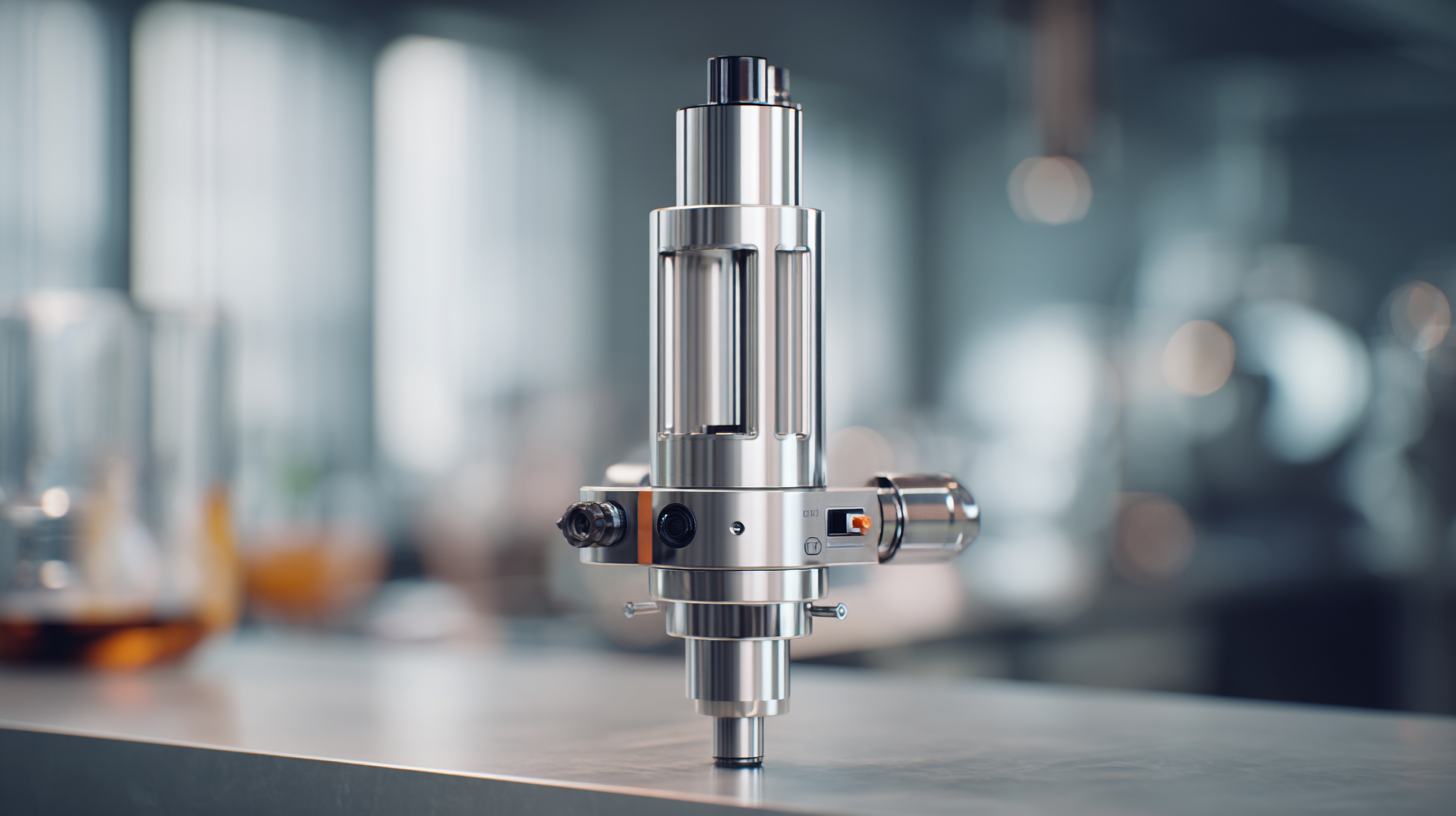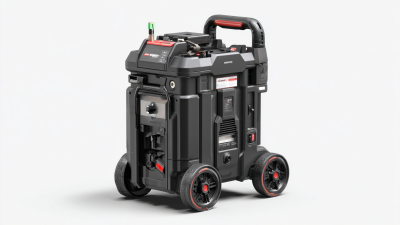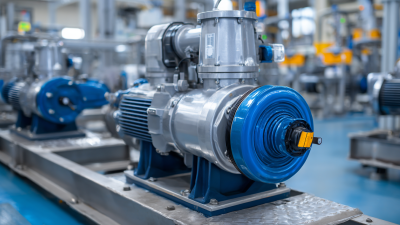Exploring the Benefits of Food Pumps for Efficient Culinary Experiences
In the realm of modern culinary practices, the integration of technology is transforming the way professional chefs and home cooks alike approach food preparation. One of the most innovative advancements in this field is the use of food pumps, which enhance efficiency and precision in various cooking processes. According to a recent report by the Culinary Institute of America, 78% of chefs indicate that equipment innovations significantly impact their kitchen operations, and food pumps are at the forefront of this trend. These devices not only streamline the transfer of liquids and semi-solids but also ensure consistency in food presentation and flavor delivery. As efficiency becomes increasingly paramount in both commercial kitchens and home cooking environments, exploring the benefits of food pumps offers valuable insights into how culinary experiences can be elevated, saving time and reducing waste while maintaining high standards of quality and taste.

The Evolution of Food Pump Technology in Modern Kitchens
 The evolution of food pump technology in modern kitchens has significantly transformed culinary practices, emphasizing efficiency and creativity. Once primarily used in industrial food processing, food pumps are now becoming a staple in both professional and residential kitchens. According to a report from the Food and Beverage Equipment Manufacturers Association, the market for kitchen automation technologies, including food pumps, has witnessed a growth rate of 12% annually over the past five years. This growth is attributed to the need for streamlined food preparation processes and improved consistency in culinary presentations.
The evolution of food pump technology in modern kitchens has significantly transformed culinary practices, emphasizing efficiency and creativity. Once primarily used in industrial food processing, food pumps are now becoming a staple in both professional and residential kitchens. According to a report from the Food and Beverage Equipment Manufacturers Association, the market for kitchen automation technologies, including food pumps, has witnessed a growth rate of 12% annually over the past five years. This growth is attributed to the need for streamlined food preparation processes and improved consistency in culinary presentations.
Food pumps facilitate a variety of tasks, from precise portion control to consistent mixing of ingredients. This technology not only enhances the accuracy of recipes but also reduces waste, making it a sustainable choice for environmentally-conscious chefs. With features such as programmable settings and adjustable flow rates, food pumps cater to diverse culinary needs, from crafting delicate sauces to dispensing thicker mixtures like batters or creams.
Tip: When incorporating food pumps into your kitchen, start with recipes that require precision, such as emulsions or mousses, to fully understand how the flow rate affects texture.
Tip: Maintain your food pump regularly by cleaning it immediately after use to prevent clogging and ensure optimal performance for future culinary adventures.
Why Food Pumps Enhance Precision in Cooking Processes
Food pumps have rapidly gained popularity in the culinary world, primarily due to their ability to enhance precision in cooking processes. According to a report by the Food Industry Association, approximately 60% of professional chefs have reported improved accuracy in ingredient dispensing when using food pumps, which allows for more consistent flavor profiles and textures in dishes. This is particularly critical in high-volume food service environments, where the balance of ingredients can significantly affect the final product.
The precise control offered by food pumps minimizes the chances of over- or under-portioning, which not only results in better quality food but also reduces waste. Research published in the Journal of Culinary Science & Technology highlighted that the use of food pumps can decrease ingredient waste by as much as 30%. This metric is especially relevant as the culinary industry grapples with sustainability challenges and strives to implement more environmentally friendly practices. By optimizing ingredient usage, food pumps contribute to both improved culinary outcomes and a reduced ecological footprint, making them an invaluable tool for modern kitchens.
Exploring the Benefits of Food Pumps for Efficient Culinary Experiences
The Environmental Benefits of Using Food Pumps in Culinary Practices
Food pumps have emerged as a transformative tool in the culinary world, enhancing not only the efficiency of food preparation but also offering significant environmental benefits. By minimizing food waste and optimizing ingredient use, food pumps contribute to a more sustainable kitchen. They allow chefs to dispense exact quantities of liquids and semi-solids, reducing excess that often ends up in the trash. This precision in measurement ensures that ingredients are utilized to their fullest potential, aligning culinary practices with environmentally conscious goals.
**Tips:** Consider investing in a quality food pump that can handle various viscosities, ensuring versatility in your cooking. Additionally, batch cooking with a food pump can streamline meal prep and decrease your carbon footprint by reducing food spoilage. Moreover, using reusable containers for your ingredients when utilizing a food pump can further enhance sustainability by cutting down on single-use plastics.
In addition to cutting down food waste, food pumps also save water and energy. By utilizing just the right amount of ingredients and minimizing clean-up processes, they help reduce the environmental impact of cooking. Adopting these innovative tools in culinary practices fosters a culture of sustainability that encourages both chefs and home cooks to think critically about their resource usage.
Exploring the Benefits of Food Pumps for Efficient Culinary Experiences - The Environmental Benefits of Using Food Pumps in Culinary Practices
| Benefit | Description | Environmental Impact |
|---|---|---|
| Reduction of Food Waste | Food pumps minimize food wastage by accurately dispensing ingredients. | Less waste reduces landfill contribution and methane emissions. |
| Energy Efficiency | Food pumps require less energy compared to traditional equipment. | Lower energy consumption decreases fossil fuel reliance. |
| Precise Portion Control | Allows for exact measurements, leading to consistent quality. | Promotes sustainable sourcing by reducing excess production. |
| Improved Shelf Life | Reduces exposure of food to air, which can preserve freshness. | Decreases spoilage rates and lowers the carbon footprint of food production. |
| Reduction in Water Usage | Minimal rinsing required due to limited spills and splatters. | Conserves water resources, contributing to sustainability efforts. |
How Food Pumps Improve Food Safety and Hygiene Standards
Food safety is an ever-pressing concern, particularly after the revelation that
dozens of supermarkets have recently failed essential hygiene inspections. In this context,
food pumps emerge as essential tools in enhancing food safety and hygiene standards. These devices are designed to minimize contamination risks by reducing direct contact between food products and handling processes. By ensuring that food is transported smoothly and safely, food pumps play a vital role in maintaining the integrity of the food supply chain.
When implementing food pumps, it’s crucial to prioritize hygiene. Selecting pumps made from high-quality, hygienic materials can significantly impact food safety. Additionally, regular maintenance and thorough cleaning of these pumps are essential to prevent any buildup of residues that could lead to contamination. Conducting regular training for staff on the importance of hygiene practices further promotes a culture of safety within the culinary environment.
As technology advances, the food and beverage industry is seeing a shift towards smarter, more efficient processes. The integration of innovative food pumps not only enhances productivity but also supports stringent safety standards. With the global food pumps market projected to grow significantly in the coming years, investing in these technologies is a forward-thinking approach for culinary businesses aiming to improve food safety and hygiene outcomes.
Exploring Cost-Effectiveness: Food Pumps vs. Traditional Cooking Methods
When it comes to modern culinary experiences, food pumps are rapidly gaining attention for their efficiency and cost-effectiveness compared to traditional cooking methods. One of the major advantages of food pumps is their ability to optimize ingredient usage, reducing waste significantly. By precisely controlling the flow and amount of ingredients dispensed, chefs can minimize leftover materials, ultimately lowering food costs. This precision not only saves money but also contributes to a more sustainable kitchen environment.
**Tip:** To make the most out of your food pump, always pre-measure your ingredients to determine the best flow rates. This practice lets you adjust settings efficiently and ensures you’re maximizing the pump’s potential without overusing ingredients.
In addition to cost savings, food pumps can enhance the overall cooking experience. They allow for seamless integration of flavors and ingredients, providing a consistent and high-quality product every time. By streamlining processes, chefs can focus their creativity on crafting unique dishes rather than on labor-intensive preparation.
**Tip:** Experiment with different types of pumps for various textures and flavors. For instance, using a food pump for sauces can yield smoother results than traditional mixing methods, leading to a more refined dish.

Related Posts
-

Understanding the Benefits of a Food Pump for Home Cooking Efficiency
-

The Future of Battery Pumps Revolutionizing Efficiency in Power Tools
-

Revolutionizing Pump Systems with IoT Integration for Enhanced Efficiency and Performance
-

Unlocking Efficiency: The Ultimate Guide to Choosing the Right Chemical Pump for Your Industrial Needs
-

Understanding the Essential Role of Lab Pumps in Modern Scientific Research
